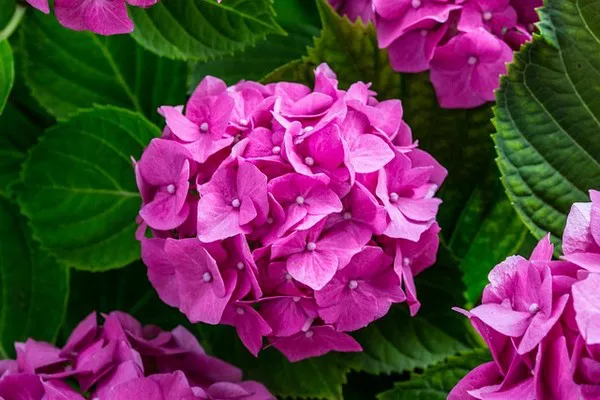In the lush tapestry of nature, flowers often communicate profound messages beyond their aesthetic appeal. Among these, the hydrangea flower stands out, captivating admirers with its abundant clusters and diverse colors. However, beneath its delicate petals lies a rich symbolism that transcends mere beauty. In this article, we delve deep into the meanings associated with the hydrangea, unraveling its significance across cultures and contexts.
Understanding the Hydrangea: Botanical Overview
Before delving into its symbolism, it is crucial to grasp the botanical essence of the hydrangea. Belonging to the Hydrangeaceae family, this flowering plant encompasses a variety of species, characterized by their large, showy blooms and lush foliage. Native to regions of Asia and the Americas, hydrangeas thrive in diverse climates, symbolizing resilience and adaptability from a botanical standpoint.
SEE ALSO: A Comprehensive Guide to Preserving Hydrangea Flowers
Symbolism Through Color
One of the most intriguing aspects of hydrangeas is their ability to convey different meanings through their varied hues. Each color variation carries its own symbolism, adding layers of depth to the flower’s significance.
Blue Hydrangeas: Symbolizing serenity, tranquility, and heartfelt emotions, blue hydrangeas evoke a sense of calmness and peace. They are often associated with feelings of sincerity and understanding, making them a popular choice for conveying apologies or expressing gratitude.
Pink Hydrangeas: Radiating grace, sweetness, and affection, pink hydrangeas embody a sense of joy and gratitude. They are frequently exchanged to convey admiration, appreciation, and love, making them a favored choice for romantic gestures and expressions of admiration.
White Hydrangeas: Representing purity, innocence, and spirituality, white hydrangeas exude an aura of elegance and reverence. They are often chosen for weddings, symbolizing the sacred bond of marriage and the purity of love. Additionally, white hydrangeas are associated with new beginnings, making them a poignant gift for graduations, births, and other significant life events.
Purple Hydrangeas: Signifying mystery, enchantment, and luxury, purple hydrangeas evoke a sense of wonder and fascination. They are often exchanged as a symbol of admiration and appreciation for someone’s unique qualities and talents. Additionally, purple hydrangeas are believed to possess mystical properties, making them a popular choice for spiritual ceremonies and rituals.
Green Hydrangeas: Reflecting renewal, growth, and vitality, green hydrangeas symbolize resilience and perseverance in the face of adversity. They are often associated with hope and optimism, serving as a reminder of the potential for growth and transformation even in challenging circumstances.
Cultural Significance
The symbolism of hydrangeas extends beyond individual interpretations, resonating deeply within various cultural contexts. Across different societies and traditions, hydrangeas hold special significance, often playing pivotal roles in rituals, ceremonies, and symbolic gestures.
Japanese Culture: In Japan, hydrangeas, known as “ajisai,” are celebrated for their association with the rainy season, symbolizing both the beauty and melancholy of transient moments. They are prominently featured in art, literature, and festivals, where they serve as a metaphor for the ephemeral nature of life and the importance of embracing change.
European Traditions: In European folklore, hydrangeas have been linked to diverse beliefs and superstitions. In some cultures, they are associated with gratitude and heartfelt emotions, while in others, they are believed to possess protective qualities, warding off negative energies and evil spirits. Additionally, hydrangeas are often used in floral arrangements for weddings and other celebratory occasions, symbolizing love, abundance, and prosperity.
American Symbolism: In the United States, hydrangeas have garnered popularity as symbols of hospitality and generosity. Adorning gardens, porches, and outdoor spaces, they welcome visitors with their vibrant blooms and lush foliage, creating a warm and inviting atmosphere. Additionally, hydrangeas are often exchanged as tokens of appreciation and friendship, reflecting the values of kindness and companionship.
Literary and Artistic Representations
Throughout history, hydrangeas have served as muses for poets, artists, and writers, inspiring evocative expressions of beauty, love, and longing. From classic literature to contemporary art, the allure of hydrangeas has captured the imagination of creative minds, infusing their works with layers of symbolism and emotion.
Literary References: In literature, hydrangeas have been portrayed as symbols of love, longing, and the passage of time. Writers such as Marcel Proust, Virginia Woolf, and Haruki Murakami have incorporated hydrangeas into their narratives, using them to evoke poignant reflections on memory, desire, and the transient nature of existence.
Artistic Depictions: In the realm of visual arts, hydrangeas have been immortalized in paintings, photographs, and sculptures, where they serve as motifs of beauty, abundance, and fragility. Artists like Claude Monet, Georgia O’Keeffe, and Hiroshi Yoshida have depicted hydrangeas in their works, capturing their ethereal essence and symbolic resonance.
Spiritual and Metaphysical Meanings
Beyond their aesthetic allure, hydrangeas are imbued with spiritual and metaphysical meanings that resonate with seekers of inner wisdom and enlightenment. In various spiritual traditions and esoteric practices, hydrangeas are revered for their mystical properties and transformative energies.
Healing Properties: In alternative medicine and holistic healing, hydrangeas are believed to possess medicinal properties, offering relief from ailments and promoting overall well-being. From herbal remedies to flower essences, hydrangeas are utilized in various forms to harness their healing energies and restore balance to the body, mind, and spirit.
Symbol of Transformation: In metaphysical circles, hydrangeas are regarded as symbols of transformation and spiritual growth. Just as the flower undergoes cycles of growth and renewal, individuals are encouraged to embrace change and embark on their journey of self-discovery, trusting in the transformative power of inner wisdom and intuition.
Conclusion
In conclusion, the symbolism of hydrangeas transcends mere aesthetics, encompassing a myriad of meanings that resonate deeply within the human psyche. From expressions of love and gratitude to reflections on life’s fleeting beauty, hydrangeas inspire us to embrace the richness of experience and cherish the profound connections that bind us to each other and the natural world. As we contemplate the hidden meanings behind these exquisite blooms, may we find solace, inspiration, and a renewed appreciation for the intricate tapestry of existence that surrounds us.


